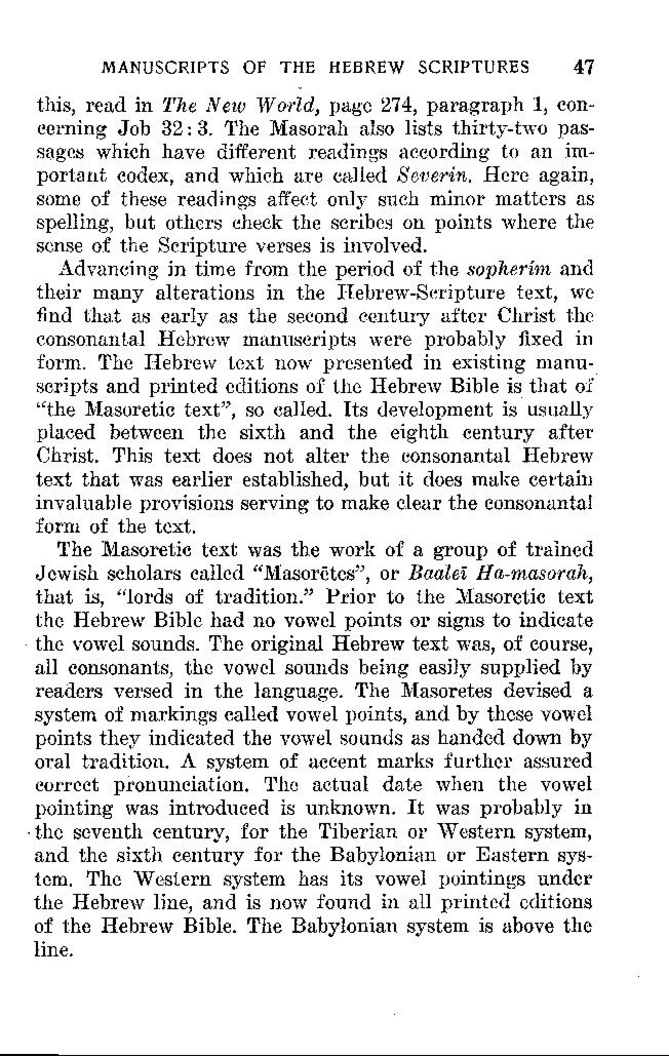{{raw:data:p|nq|
this, read in The New World, page 274, paragraph 1, concerning Job 32 : 3. The Masorah also lists thirty-two passages which have different readings according to an important codex, and which are called Severin . Here again, some of these readings affect only such minor matters as spelling, but others check the scribes on points where the sense of the Scripture verses is involved . Advancing in time from the period of the sopherim and their many alterations in the Hebrew-Scripture text, we find that as early as the second century after Christ the consonantal Hebrew manuscripts were probably fixed in form . The Hebrew text now presented in existing manuscripts and printed editions of the Hebrew Bible is that of "the Masoretic text", so called . Its development is usually placed between the sixth and the eighth century after Christ . This text does not alter the consonantal Hebrew text that was earlier established, but it does make certain invaluable provisions serving to make clear the consonantal form of the text . The Masoretic text was the work of a group of trained Jewish scholars called "Masoretes", or Baalei Ha-masorah, that is, "lords of tradition ." Prior to the Masoretic text the Hebrew Bible had no vowel points or signs to indicate the vowel sounds . The original Hebrew text was, of course, all consonants, the vowel sounds being easily supplied by readers versed in the language . The Masoretes devised a system of markings called vowel points, and by these vowel points they indicated the vowel sounds as handed down by oral tradition. A system of accent marks further assured correct pronunciation. The actual date when the vowel pointing was introduced is unknown . It was probably in -the seventh century, for the Tiberian or Western system, and the sixth century for the Babylonian or Eastern system . The Western system has its vowel pointings under the Hebrew line, and is now found in all printed editions of the Hebrew Bible . The Babylonian system is above the line .
